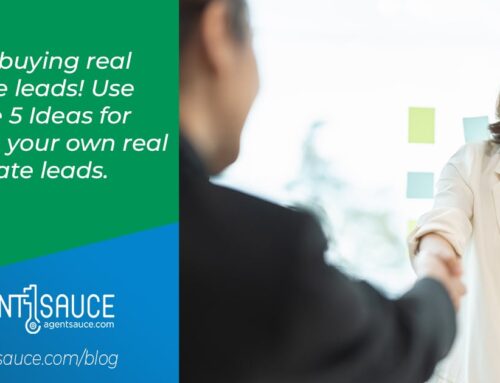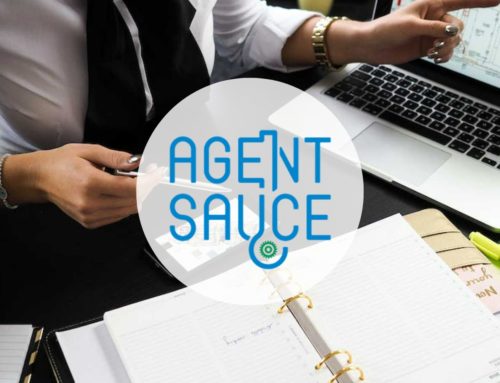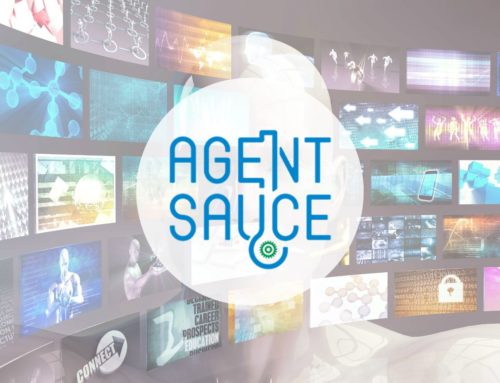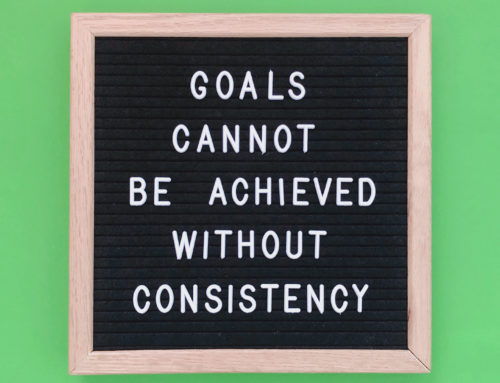Real Estate Landing Pages
In this episode we focus on Real Estate Landing Pages. We talk about what they are, how to use them to generate leads and provide value to your customers.
Real Estate Landing Pages Take Aways
- Create more real estate landing pages
- Test real estate landing pages for effectiveness
- Reward the person giving you their information
Real Estate Landing Pages Transcription
Adam Small: Good afternoon. This is Adam Small with Agent Sauce, and this is the Real Estate Marketing Podcast.
Adam Small: With me today, Doug Karr.
Douglas Karr: Hello, sir.
Adam Small: How are you doing today, Doug?
Douglas Karr: Fantastic.
Adam Small: And we got intern Austin.
Austin Day: Hello.
Adam Small: How are you doing, Austin?
Austin Day: Good, how are you?
Adam Small: Good.
Adam Small: So, listen, guys, today I was thinking we could talk about real estate landing pages.
Douglas Karr: Yay.
Adam Small: The elements of a good real estate landing page, what makes an effective real estate landing page, you know, even just define for some people what a landing page is.
Adam Small: So why don’t you start, Doug, with defining a landing page for us?
Douglas Karr: Oh, thanks! (laughs)
Adam Small: Gonna put you on the spot right away, man!
Douglas Karr: Well, a landing page is basically, when people land on your website, you have a homepage, obviously. But a lot of people don’t land on a homepage.
Adam Small: Right.
Douglas Karr: They land internal to a site. Well, when you want to target a page that they’re gonna land internal, so it might be a Facebook advertisement or a link that you’re sharing via social media, you want them to land directly onto a page that you want them to convert on. You don’t want them to dance around your site or anything else. And so that’s called a real estate landing page.
Adam Small: Right.
Douglas Karr: You have a place where they’re gonna click, and then a place where they’re gonna land. And on that real estate landing page is where you also want them to convert.
Adam Small: Right.
Douglas Karr: Provide you information, fill in a form, buy a product, do whatever.
Adam Small: So it’s a special page built just to … for somebody to come to from an ad-
Douglas Karr: Yeah.
Adam Small: And stay there and convert.
Douglas Karr: Or, or a click. Yeah.
Adam Small: An ad or a click of some sort. But the whole intent is, is that it’s created specifically for one purpose and for traffic to be driven to it and then convert.
Douglas Karr: Yeah.
Adam Small: Right?
Douglas Karr: So let’s say if you’re a real estate agent, and you wrote for the local newspaper.
Adam Small: Right.
Douglas Karr: And you wrote an article on, who knows … what would be a good one?
Adam Small: Things every buyer should know before buying a home.
Douglas Karr: Okay. That’s a perfect one.
Douglas Karr: Well, you would want to make sure that you didn’t just throw them onto an article on your site. You’d want to put them on a landing page on your site where they could read that article, but they could also convert. If you need more information, fill in your information, set an appointment, whatever.
Adam Small: Right. Right. Great.
Adam Small: Along those lines, then, there are certain elements of every real estate landing page that should be present, right?
Douglas Karr: Yep.
Adam Small: Off the top of my head, one that comes to mind is a call to action.
Douglas Karr: Yep.
Adam Small: A form, you know, and then obviously, the reward. Some content or downloadable content or something along those lines, right? What other things do you think might be required? What would be best to have on a landing page?
Douglas Karr: Well, sometimes, it’s not what’s on it. It’s what’s off it too. So-
Adam Small: Like a navigation bar, right?
Douglas Karr: A lot of people leave navigation ’cause they want it to be an exit. They want you just to go there, and that’s it. And so a lot of people, not everybody, but a lot of people will leave the navigation off. And that way, they just have your attention captured right there.
Adam Small: Right. There’s no other option, nowhere else to explore or anything like that, which, the one train of thought on that is, “Oh no. What if this isn’t good enough and doesn’t convert ’em? I’m gonna give ’em somewhere else to go. That’s why I leave it on there.”
Adam Small: But the other side of that is, by channeling the reader into one position, one place, they really only have two options.
Douglas Karr: Yep.
Adam Small: Either request more information from you, or leave altogether, and if they’re interested, they’re gonna do the request more information from you.
Douglas Karr: Exactly.
Adam Small: Right?
Douglas Karr: Yeah.
Adam Small: So okay. So then, what’s not on there is as important as what is on there, and we’ve talked about having a call to action and a form so far, right?
Douglas Karr: Yep.
Adam Small: And some content.
Adam Small: Call to action … what’s important to have in that call to action?
Douglas Karr: You want a good, you know, you want it to be a good, strong title that’s gonna grab their attention.
Adam Small: Big letters.
Douglas Karr: Yep.
Adam Small: Attention-grabbing.
Douglas Karr: Yeah.
Adam Small: Colors?
Douglas Karr: Maybe. I mean, definitely a stark difference from the background or whatever. You don’t want it to be-
Adam Small: Hard to read.
Douglas Karr: Hard to read.
Adam Small: Right. So you want it to flow well, want it to be visible, contrast well. Right?
Adam Small: I seem to recall reading not too long ago about how certain colors converted more than others.
Douglas Karr: Oh yeah.
Adam Small: I think you’ve actually done some A/B testing with that, haven’t you?
Douglas Karr: Yeah, we, yeah. There’s a bunch of science behind colors and what works. Like luxury colors are blacks, you know. And blue is a color of trust.
Adam Small: Mm-hmm (affirmative).
Douglas Karr: Green is a color of new and fresh, you know. And so, you know, you just think about, obviously, the people that are trying to save energy and everything, then green. It’s green.
Adam Small: Right. They go with green.
Douglas Karr: So what winds up happening is, when you go to a page and it’s green, it evokes-
Adam Small: Associates in your mind, right?
Douglas Karr: Yeah.
Adam Small: Just like you were talking elegance and luxury would be that glossy black and either a mixture of gold or maybe silver, depending on what they’re trying to convey, right?
Douglas Karr: Yeah. White is purity.
Adam Small: Right. Right. So color’s important.
Adam Small: On the data collection forms, how much data should you collect?
Douglas Karr: The least possible. There’s substantial research out there that absolutely shows that the more form fields that you have, the more you’re gonna lose someone. And part of the thing that we tend to see is that people will ask for a bunch of information that’s really not relevant.
Adam Small: Right.
Douglas Karr: And sometimes they ask for things that they could’ve prefilled in.
Adam Small: Mm-hmm (affirmative).
Douglas Karr: So like, in an email, if you had a good call to action in an email, you’ve already got their email address. You probably have their name in your CRM, everything else.
Adam Small: Right. So go ahead and prefill those. Pre-populate. Right?
Douglas Karr: Prefill those. Yeah, yeah. Pre-populate those. Have it on your landing page where it captures that data, hidden.
Adam Small: Right.
Douglas Karr: I mean, you don’t even see it.
Adam Small: Right. Right.
Douglas Karr: And so that’s, that’s … you just wanna make it nice and easy and quick for someone to fill in the information.
Adam Small: So collect as … only as much information as possible to get you through to what you need.
Douglas Karr: Yeah, and don’t think that that’s just an email address or just a name. You know, obviously, if you wanna pre-qualify a lead or something like that, for a real estate agent, that might be, how soon are you thinking about buying a home?
Adam Small: Right.
Douglas Karr: And if it’s less than 60 days, you wanna reach out to them. But if someone says-
Adam Small: A year.
Douglas Karr: Two years-
Adam Small: Right. Right.
Douglas Karr: You know, you’re probably not gonna be interested.
Adam Small: They go more into your long-term file, and you nurture that relationship, as opposed to saying, “Well, I need to pick up the phone and call ’em tomorrow.”
Douglas Karr: Right.
Adam Small: Right. Right. Cool.
Adam Small: So what other elements of a real estate landing page are important, Doug?
Douglas Karr: Testimonials.
Adam Small: Testimonials? So social proof?
Douglas Karr: Yeah, having someone, having a quote from somebody that says, “This is my favorite real estate agent” or “Loved working with them”. And have a picture of that person as well, so that people don’t think it’s just a fake.
Adam Small: ‘Cause that really lends to the social proof, that other people are using it or buying it or whatever it may be, and they’re liking it and enjoying it, right?
Douglas Karr: Yeah, trust is the hardest thing that you’re trying to overcome on this.
Adam Small: And by putting the picture up there along with the quote, you’re putting a face to a name, which immediately evokes, oh well, this is a real person. This isn’t just something that was made up.
Douglas Karr: Exactly. Right.
Adam Small: Interesting. Interesting.
Adam Small: So we’ve got testimonials, we’ve got forms. And what about branding?
Douglas Karr: (laughs)
Adam Small: We’ll try that again.
Adam Small: How important is it to have your branding on the landing page?
Douglas Karr: You know, it’s one of those things that, it’s mixed reviews on that, honestly. If you have a really strong brand, like, you know, we’ve got the Agent Sauce logo up behind us … obviously, the colors on that, the fonts, everything else … the more that you use them, again, trust is evoked, right?
Adam Small: Right.
Douglas Karr: “Oh, I see these guys all the time. I saw them at a conference. I saw this, I saw that.”
Douglas Karr: And so it tends to evoke that. For other people though, if it’s a brand that nobody knows about, sometimes we don’t worry about the brand too much. We worry more about the message.
Adam Small: Mm-hmm (affirmative).
Douglas Karr: You’ll find real estate landing pages where the company isn’t even … they go buy their own domain separate from their website, and they don’t use any branding. And they just want you to focus on that content and pull them in.
Adam Small: Good, good.
Douglas Karr: So it might be like a … in the real estate agent industry, there might be real estate investments.
Adam Small: Right.
Douglas Karr: Someone might have, they’re a real estate agent, but they might have a landing page out there just called “Real Estate Investments”, and it talks about investing and trying to get someone to click through on that.
Adam Small: Mm-hmm (affirmative). What about social media in any way, shape, or form? Do you link to it, or do you put anything from social media into the landing pages? Is there any sort of tie between social media and the landing page?
Douglas Karr: Most people have social media sharing buttons on a real estate landing page ’cause they’ve worked so hard to build a great landing page that they want people to share it. And what that’s great for is, look, I might be curious, but if I’m in the real estate industry, I might want to share it with everybody.
Adam Small: True.
Douglas Karr: Well, it’s a pain the butt for me to grab a link and put it in Facebook, but if I could share it with a button-
Adam Small: Right then and there.
Douglas Karr: You know, that makes it a lot easier.
Douglas Karr: And then on the reverse, like you said, if you’re gonna share it on social media, you probably want some kind of campaign tracking so that in analytics, you can see, “Oh, I got this many people from Facebook who converted or this many from Twitter.”
Adam Small: This is where my traffic’s coming from, these are my conversions.
Douglas Karr: Yeah.
Adam Small: ‘Cause you could very well be getting a ton of traffic from one social media network and not much from the second, but the second is the one that’s converting the most.
Douglas Karr: Right.
Adam Small: You know, so then you know to try to focus your efforts there, right?
Douglas Karr: Yeah.
Adam Small: So analytics is obviously something you wanna have on a real estate landing page as well.
Douglas Karr: Yep.
Adam Small: And the importance of analytics can’t be understated because that tells you whether or not it’s working, ROI, the whole nine yards there.
Douglas Karr: Yeah.
Adam Small: So make sure you get your analytics code into the landing page, and also on any links or whatever leading into the landing page so that you can further classify not only the amount of times the page itself worked and was converting, but where the source of those conversions and that traffic is coming from too.
Douglas Karr: Right.
Adam Small: Cool.
Adam Small: Austin, I’m gonna put you on the spot. You got any questions for Doug regarding real estate landing pages, or any thoughts?
Austin Day: I think the biggest thing is how you differentiate when you’re putting the actual button for them to click to submit their form. Should they just put “submit” right there, or should they put “get this”-
Adam Small: Oh, the verbiage.
Douglas Karr: Yeah, a lot of people-
Austin Day: ‘Cause I think a lot of people, they might think too much into it. What do you think about that?
Douglas Karr: (laughs) You’re gonna look like-
Austin Day: Yeah.
Douglas Karr: You got like this (laughs)-
Adam Small: Like a prisoner or something behind bars.
Austin Day: Yeah. Yeah.
Douglas Karr: You seriously might wanna cut that out.
Adam Small: Eh, it’s okay.
Douglas Karr: Alright.
Adam Small: It’s just a dry run.
Douglas Karr: (laughs) okay.
Austin Day: ‘Cause I know a lot of people don’t like to say they’re submitting to anything.
Douglas Karr: Sometimes. Yeah. I mean, one of the things that I was gonna bring up was testing. And so I never say no, but I would say test it. And everything on the real estate landing page … there’s a lot of tools out there that you could to A/B testing, you could do version testing. And so those are the types of things, headings and content and pictures and background colors. Buttons, button sizes, button colors, button messages. All of those things. You could use these systems and basically test.
Douglas Karr: And so, what happens is, Adam goes to the website, and it shows “Please send the information”. You show up on it, and it says something else. I show up on it. And then, at the end of a month, you could sit there and say, “Oh, this one got a higher click-through rate. Let’s just change the verbiage to that. Keep it that way.”
Adam Small: Well, and along those lines too, recently, you just did a pretty slick little integration with the real estate landing page where it displayed a different phone number based on location.
Douglas Karr: Yeah.
Adam Small: Right? And the whole intent and purpose of that was to be able to track where the locations were coming from and which leads were generating-
Douglas Karr: Yeah, that was a client that, they want the majority of their leads to come, to call.
Adam Small: Right.
Douglas Karr: That’s what they want. They don’t want them to click the button or submit a form. And so what we did was, we put a dynamic phone number up there so that if they came from a search engine, we made it one phone number. If they came from social, it’s a different number. If they came from a website, it was different. And then we can track which number they called and see where the traffic was coming from and where the conversions were coming from.
Adam Small: So you know which efforts are working most.
Douglas Karr: Yeah. Right. Exactly.
Adam Small: Right. So, very, very slick integration there. Cool.
Douglas Karr: Couple other things people shouldn’t forget is that SSL is becoming more and more important nowadays. I think Google has warned people for about the fifth time-
Adam Small: Right, I was just reading something where they recently said something yet again.
Douglas Karr: Yeah. And I would say that the thing that they’re gonna hit hardest is real estate landing pages because you’re entering form data.
Adam Small: Mm-hmm (affirmative).
Douglas Karr: And so, for people that don’t understand, it’s that when you don’t have a secure certificate on your website and people click “send”, they’re sending that raw data basically in a stream that-
Adam Small: Anybody can see that with a packet sniffer in between.
Douglas Karr: Yeah, if they were sniffing anything upstream on the wireless router or on anything. And so, what SSL does is basically, it does a handshake first and it says, “Hey, give me some kind of key.” It gives me a key, and then I encrypt my data, and then I send it. And so anybody sniffing can’t see raw data.
Adam Small: Right.
Douglas Karr: And so, SSL is a really, really critical piece of any real estate landing page nowadays. You wanna have an SSL certificate on there.
Douglas Karr: And then the second one, which people don’t think about at all, is legal.
Adam Small: Oh.
Douglas Karr: How are you using the data? So you might want to have a privacy statement on there, saying-
Adam Small: Terms and conditions, as well?
Douglas Karr: Yeah, basically. And you can look these up. In all honesty, you could go look at another website and see what theirs are and write ’em. You can go buy them online from attorneys.
Adam Small: There are services out there that do that, right?
Douglas Karr: Yeah. But for the most part, what you’re trying to do is tell people how you’re going to use that data because if I submit my data to you, and then you go sell it to a third party, but you didn’t tell me that? If you didn’t say that that’s what you were going to do-
Adam Small: Right.
Douglas Karr: You can get in real trouble. So let’s say a real estate agent has their own personal website, but they belong to a real estate group, and they take your data and they throw it into the group, and all of a sudden, somebody else starts calling ’em from the group or whatever. You could-
Adam Small: That could be a real liability.
Douglas Karr: You could get in trouble.
Adam Small: Yeah. Yeah.
Douglas Karr: And so you wanna be able to tell them, “Hey, we’re only utilizing this data for X, Y, and Z. We never sell it to third parties.”
Adam Small: Right. Right.
Douglas Karr: But I would almost always recommend a legal statement on a real estate landing page, as well. Just to say how you’re gonna use the data.
Adam Small: Okay. Well, what about copy itself, right? I would think that one of the more important things is, everybody wants to try to get their message across, but you don’t want to make it super-intensive where it’s like trying to read a novel, right?
Douglas Karr: Yes and no. You definitely want subheadings and everything broken up easy that people can scan it.
Adam Small: Right.
Douglas Karr: But some of the more surprising things are people, you’ll read a lot online where people say, “Short landing pages. Short landing pages. Don’t make people scroll.”
Adam Small: Right.
Douglas Karr: But the stats are pretty much-
Adam Small: Well, long copy is really effective if you’ve done it right.
Douglas Karr: Yeah. Yeah. I mean, go to the Amazon Alexa page. It’s a mile long. It’s got characteristics and testimonials and ratings and reviews. You name it, it’s got it on there, and that’s a huge, high-selling, high-converting Amazon test.
Adam Small: Right.
Douglas Karr: 400 different ways on those pages. So what I would say is, you want enough information to obviously get someone’s interest piqued. Maybe not so much that you answer their question though.
Adam Small: Right.
Douglas Karr: And what I mean by that is, you want them to understand enough that they want a little bit more. You know, you don’t want to just give them the full answer. It would be like, someone comes to your page and says, “How much is X?”
Douglas Karr: And you write, “Well, here’s all the things that go into pricing out this. Call us for a quote.”
Adam Small: Right.
Douglas Karr: You know. And so you’re basically, “Oh, they educated me”-
Adam Small: You’re giving them an idea. You’re helping them, but-
Douglas Karr: But they’re pulling me in for the-
Adam Small: Drawing it back to you, right. Exactly. Cool.
Adam Small: Any final thoughts? Anything else?
Douglas Karr: Well, videos. Videos do help real estate landing pages.
Adam Small: Yeah.
Douglas Karr: You wanna keep ’em, again, fairly short. You know, 30 seconds to a couple minutes.
Adam Small: Right.
Douglas Karr: But customer testimonials or an explanation or an introduction-
Adam Small: [inaudible 00:18:05] video.
Douglas Karr: If it’s a real estate agent, it might be a really nice, warm introduction to them.
Adam Small: Right.
Douglas Karr: So video is one of those things that I’d absolutely recommend. And I think more and more are recommending video.
Adam Small: Cool.
Adam Small: Any other thoughts? Anything else?
Douglas Karr: There was. I lost it.
Adam Small: Oh. It’ll come back to you later.
Douglas Karr: (laughs)
Adam Small: We may add it as an addendum underneath the-
Douglas Karr: Oh, I know what I was gonna say. A takeaway. Give them something right there.
Adam Small: Right.
Douglas Karr: Like instead of … it might be a PDF or something that you can give to them that-
Adam Small: The reward, right?
Douglas Karr: Yeah. Tease ’em with something right there before you just up and call them.
Adam Small: Right. Right.
Douglas Karr: I download stuff all the time, and I always get an email or a phone call a few days later that says, “Hey, I noticed that you downloaded our white paper. Did you have any questions on it?”
Adam Small: Yup. Yup.
Douglas Karr: And that’s a nice, warm introduction. It’s not a cold one.
Adam Small: Yeah. Right.
Douglas Karr: I’d say if you can provide something of value to someone, to fill out the information right then and there, you’re gonna increase your conversion rate.
Adam Small: Great.
Douglas Karr: And tell them that they’re gonna get it.
Adam Small: Yeah. Yeah. Well, let ’em know. Inform, right?
Douglas Karr: Yeah.
Adam Small: Austin, any thoughts, any questions?
Austin Day: Just one takeaway I have is just, creating more real estate landing pages. I think that’s shown time and time again that you’re just increasing your opportunities to convert more leads on that.
Douglas Karr: Yeah. Totally agree. It’s something that I think we’re all terrible at. I am.
Adam Small: Don’t have near enough of them.
Douglas Karr: I should have 25 different landing pages on my site, and I don’t, and so I try to work the other way. I try to make every page a landing page and try to think of it from that direction.
Adam Small: Right. That’s an interesting concept.
Douglas Karr: But it’s really, you’re absolutely right. You should have 10 landing pages out there working for you all the time.
Adam Small: Right.
Adam Small: Great. So, hey, thanks, guys, for joining us. Appreciate it.
Adam Small: Couple of takeaways, I guess, would be create more real estate landing pages. Test. Quantify.
Douglas Karr: Yep.
Adam Small: And make sure you reward the person that’s giving you their information.
Douglas Karr: Yeah.
Adam Small: So those are the three that I think probably the most important.
Douglas Karr: And use the data wisely.
Adam Small: (laughs)
Douglas Karr: (laughs) Well, people don’t like giving up their information and then seeing it not be used.
Adam Small: For nothing, right. Exactly. Cool.
Adam Small: Alright, guys. Well hey, thanks for listening. Appreciate it. If you need more information, wanna learn more, you can check us out at agentsauce.com. Have a great day.







